Yaesu VX-6R Handleiding
Yaesu
Walkie talkie
VX-6R
Bekijk gratis de handleiding van Yaesu VX-6R (112 pagina’s), behorend tot de categorie Walkie talkie. Deze gids werd als nuttig beoordeeld door 86 mensen en kreeg gemiddeld 4.6 sterren uit 43.5 reviews. Heb je een vraag over Yaesu VX-6R of wil je andere gebruikers van dit product iets vragen? Stel een vraag
Pagina 1/112

DUAL BAND
HEAVY DUTY SUBMERSIBLE TRANSCEIVER
VX-6R
OPERATING MANUAL
VERTEX STANDARD CO., LTD.
4-8-8 Nakameguro, Meguro-Ku, Tokyo 153-8644, Japan
VERTEX STANDARD
US Headquarters
10900 Walker Street, Cypress, CA 90630, U.S.A.
YAESU EUROPE B.V.
P.O. Box 75525, 1118 ZN Schiphol, The Netherlands
YAESU UK LTD.
Unit 12, Sun Valley Business Park, Winnall Close
Winchester, Hampshire, SO23 0LB, U.K.
VERTEX STANDARD HK LTD.
Unit 5, 20/F., Seaview Centre, 139-141 Hoi Bun Road,
Kwun Tong, Kowloon, Hong Kong

Contents
Scanning ...................................................................... 46
VFO Scanning ................................................................................
47
Setting the Squelch Level during activate Scanning Opertion
48
How to Skip (Omit) a Frequency during VFO Scan .............
48
Memory Scanning ..........................................................................
49
How to Skip (Omit) a Channel during Memory Scan ...........
49
Preferential Memory Scan .......................................................
50
Memory Bank Scan .................................................................
51
Programmable (Band Limit) Memory Scan (PMS) .....................
52
“Priority Channel” Scanning (Dual Watch) .................................
53
Automatic Lamp Illumination on Scan Stop ................................
54
Band Edge Beeper ..........................................................................
54
Weather Alert Scan ........................................................................
55
Smart Search Operation ........................................... 56
Channel Counter Operation ...................................... 58
EPCS (
Enhanced Paging & Code Squelch
) ................... 60
Storing the CTCSS Tone Pairs for EPCS Operation .....................
60
Activating the Enhanced Paging & Code Squelch System ..........
61
Paging Answer Back ......................................................................
61
Emergency Feature .................................................... 62
Emergency Channel Operation .....................................................
62
Emergency Automatic ID (EAI) Feature ......................................
62
Selecting the EAI mode and its Transmit Time .....................
63
Activating the EAI feature ......................................................
63
To Locate an Unresponsive Operator Using the EAI Feature
64
ARTSTM (
Automatic Range Transponder System
) ....... 65
Sensor Mode ............................................................... 68
To display the Temperature ...........................................................
68
To display the Sensor Information ................................................
68
Selecting and Correcting the Atmospheric Pressure Meter .........
69
Selecting and Correcting the Altimeter ........................................
69
Internet Connection Feature ..................................... 70
SRG (“Sister Radio Group”) Mode ..............................................
70
FRG (“Friendly Radio Group”) Mode ..........................................
71
DTMF Operation ....................................................... 73
Manual DTNF Tone Generation ...................................................
73
DTNF Autodialer ...........................................................................
73
CW Training Feature ................................................ 75
Miscellaneous Settings ............................................... 76
Password .........................................................................................
76
Programming the “P” Key .............................................................
77
Receive Battery Saver Setup .........................................................
77
Wakeup Feature Setup ...................................................................
78
TX Battery Saver ...........................................................................
79
ATT (Front End Attenuator) ..........................................................
79
Disabling the TX/BUSY Indicator ................................................
80
Automatic Power-Off (APO) Feature ...........................................
80
Automatic Power-On Feature ........................................................
81
Busy Channel Lock-Out (BCLO) .................................................
82
Transmitter Time-Out Timer (TOT) .............................................
83
Changing the TX Deviation Level ................................................
83
Reset Procedures ....................................................... 85
Cloning ........................................................................ 86
Set (Menu) Mode ....................................................... 87
Specifications ............................................................ 104
“AUTO” Mode Preset Operating Parameters ...... 106
General Description ..................................................... 1
Accessories & Options ................................................. 2
Controls & Connections .............................................. 3
Top & Front Panel ............................................................................
3
LCD ...................................................................................................
4
Side & Bottom Panel ........................................................................
5
Keypad ...............................................................................................
6
Installation of Accessories ........................................... 8
Antenna Installation ..........................................................................
8
Belt Clip & Hand Strap Installation .................................................
8
Installation of FNB-80LI Battery Pack ............................................
9
Battery Charging ...............................................................................
9
Installation of FBA-23 Battery Case .............................................
10
Low Battery Indication ..................................................................
10
Interface of Packet TNCs .......................................... 11
Operation .................................................................... 12
Switching Power On and Off ........................................................
12
Adjusting the Volume Level .........................................................
12
Squelch Adjustment .......................................................................
13
Selecting the Operating Band ........................................................
14
Frequency Navigation ....................................................................
14
Transmission ..................................................................................
16
Changing the Transmit Power Level ......................................
17
Changing the Microphone Gain Level ...................................
18
AM Broadcast Reception ..............................................................
18
AM Aircraft Reception ..................................................................
19
FM Broadcast/TV Audio Reception .............................................
19
Advanced Operation .................................................. 20
Keyboard Locking ..........................................................................
20
Adjusting the Keypad Beeper Volume Level ...............................
21
Keypad/LCD Illumination .............................................................
21
Changing the Channel Steps ..........................................................
22
Changing the Receiving Mode ......................................................
22
RF Squelch .....................................................................................
23
Checking the Battery Voltage .......................................................
23
Repeater Operation ................................................... 24
Repeater Shifts ...............................................................................
24
Automatic Repeater Shift (ARS) ..................................................
24
Manual Repeater Shift Activation .................................................
25
CTCSS/DCS Operation ............................................. 27
CTCSS Operation ..........................................................................
27
DCS Operation ...............................................................................
28
DCS Code Inversion ......................................................................
29
CTCSS/DCS Bell Operation .........................................................
30
Tone Search Scanning ...................................................................
31
Split Tone Operation ......................................................................
32
Tone Calling (1750 Hz) .................................................................
32
Memory Mode ............................................................ 33
Memory Storage .............................................................................
34
Storing Independent Transmit Frequencies (“Odd Split”) ...........
34
Memory Recall ...............................................................................
35
Labeling Memories ........................................................................
35
Memory Offset Tuning ..................................................................
37
Moving Memory Data to the VFO ................................................
38
Masking Memories ........................................................................
38
Memory Only Mode ......................................................................
38
HOME Channel Memory ..............................................................
39
Memory Bank Operation ...............................................................
40
Direct Memory Recall Channel ....................................................
42
Short-Wave Broadcast Station Memory Channels .......................
43
Weather Broadcast Channels .........................................................
44
VHF-Marine Channels ...................................................................
45

VX-6R OPERATING MANUAL 1
GENERAL DESCRIPTION
The VX-6R is a dual band heavy duty submersible
transceiver with extensive receive
frequency coverage, providing local-area two-way amateur communications along with
unmatched monitoring capability.
The VX-6R’s small size allows you to take it anywhere - hiking, skiing, or while walking
around town - and its operating flexibility brings the user many avenues of operating enjoy-
ment. Its incredibly compact FNB-80LI Rechargeable Lithium Ion Battery Pack provides
up to 5 Watts of transmit power on 144 MHz and 430 MHz Amateur Bands. Besides 144-
and 430-MHz transceive operation, the VX-6R provides receive coverage of the AM (MF)
and FM broadcast bands, HF Shortwave Bands, VHF and UHF TV bands, the VHF AM
aircraft band, and a wide range of commercial and public safety frequencies! Further more,
the USA version enables 1.5 Watts of transmitted power on the 222 MHz Amateur Band.
New and exciting features of the VX-6R are the Emergency Automatic ID (EAI) function,
that will automatically cause your VX-6R to transmit your callsign and engage your rig’s
microphone, even if you are disabled and unable to press the PTT switch; Enhanced Pag-
ing and Code Squelch (EPCS), that allows you to page a particular station and only receive
calls from that station, if desired; and a security Password feature, that will allow you to
turn on and operate your transceiver only after you
enter your Password.
Additional features include a convenient access key
for Vertex Standard’s WIRES™ (Wide-coverage
Internet Repeater Enhancement System), a trans-
mit Time-Out Timer (TOT), Automatic Power-Off
(APO), Automatic Repeater Shift (ARS), Yaesu’s
exclusive ARTS™ (Auto-Range Transponder Sys-
tem) which “beeps” the user when you move out of
communications range with another ARTS™
equipped station, plus provision for reduction of the
TX deviation in areas of high channel congestion.
And an RF squelch circuit allows the owner to set
the squelch to open at a programmable setting of
the S-Meter, thus reducing guesswork in setting the
squelch threshold.
We appreciate your purchase of the VX-6R, and
encourage you to read this manual thoroughly, so
as to learn about the many exciting features of your
exciting new Yaesu hand-held transceiver!
: JIS-6 Specification for submersibility:
3 ft. for 30 minutes
Product specificaties
| Merk: | Yaesu |
| Categorie: | Walkie talkie |
| Model: | VX-6R |
Heb je hulp nodig?
Als je hulp nodig hebt met Yaesu VX-6R stel dan hieronder een vraag en andere gebruikers zullen je antwoorden
Handleiding Walkie talkie Yaesu
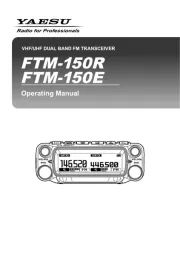
19 Mei 2025

16 Juli 2024

16 Juli 2024

16 Juli 2024

16 Juli 2024

16 Juli 2024

16 Juli 2024

16 Juli 2024

16 Juli 2024

8 Oktober 2022
Handleiding Walkie talkie
- Topsung
- Nedis
- Esscom
- Akai
- Joycall
- Hoffer
- Vertex Standard
- Logicom
- Elro
- Denver
- Flamingo
- Marquant
- Ciphersmesh
- Icom
- Topcom
Nieuwste handleidingen voor Walkie talkie
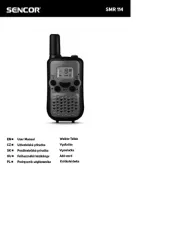
29 Juli 2025
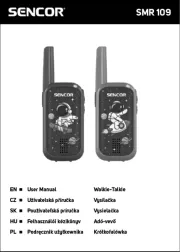
28 Juli 2025
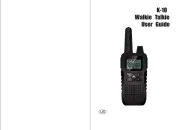
28 Juli 2025
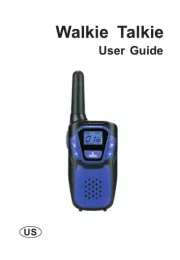
28 Juli 2025
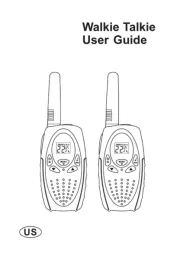
28 Juli 2025
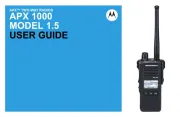
15 Juli 2025
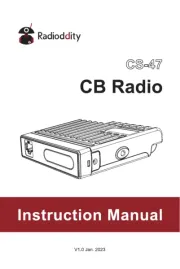
15 Juli 2025
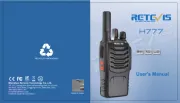
15 Juli 2025

15 Juli 2025
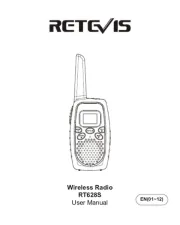
15 Juli 2025